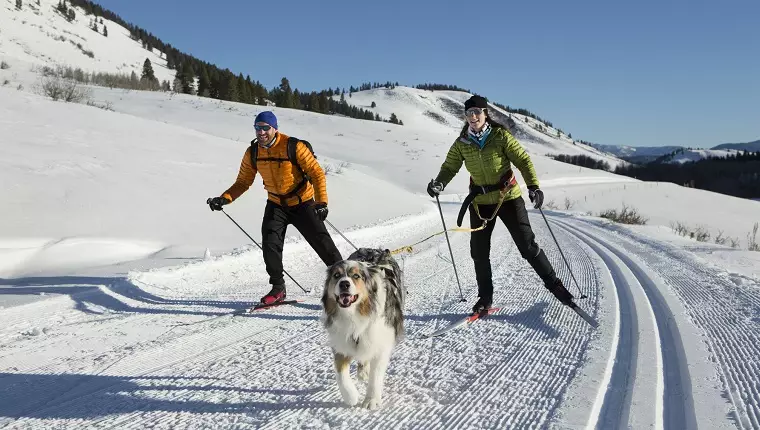As winter settles in, many dog owners find themselves grappling with the challenge of keeping their furry friends active amidst the cold and snow. While cozying up indoors might feel tempting, it’s essential to engage in physical activities to maintain your dog’s health and happiness. For those with high-energy breeds, skijoring could be the perfect solution, combining the thrill of winter sports with the companionship of your canine buddy.
Originating from Norway, skijoring presents a unique blend of cross-country skiing and dog-driven excitement. In this exhilarating sport, the human skier is towed by a dog, attached via a special harness and lead. This partnership fosters a sense of camaraderie, as both the skier and the dog work together to navigate the snowy terrain. Unlike dog sledding, where dogs bear the brunt of the effort, skijoring is more about teamwork; the human must actively ski, maintaining an equal pace with the dog instead of being merely pulled along. This dynamic not only preserves the dog’s energy but also gives the human an invigorating workout.
Before heading out, careful preparation is key. Investing in the right equipment provides a safe and enjoyable experience. A sturdy harness for your dog, a reliable lead, and appropriate skiing gear are necessary components. Furthermore, basic skiing skills can significantly enhance the skijoring experience. For beginners, having a background in skating may offer a significant advantage. It allows for better balance and the ability to use techniques that keep movement fluid and controlled. Learning to glide efficiently can be essential, especially when guiding an excited dog that might not always behave predictably.
Jill Carter, an experienced skijorer, emphasizes the importance of knowing how to ski effectively. Her technique involves using a side-to-side motion to maximize speed while accommodating the pace of her energetic dog. This adaptability is crucial, as each dog has its own rhythm and level of enthusiasm, creating a lively yet manageable experience.
While skijoring can be enjoyed by many breeds, not all dogs are suited for this exhilarating sport. Larger and more active dogs are generally better equipped to participate in skijoring. Breeds such as Siberian Huskies, Malamutes, and Samoyeds thrive in colder conditions and possess the stamina for long runs through snow. Likewise, larger breeds like German Shepherds and American Bulldogs can also enjoy this winter adventure, provided they are in good health and physically fit.
On the flip side, smaller breeds such as Chihuahuas or Shih Tzus may find the demands of skijoring overwhelming and should preferably be spectators rather than participants. Ensuring that your dog has a natural inclination toward pulling and running is essential for a positive skijoring experience. Proper training also bolsters their skills, making the activity more enjoyable for both dog and owner.
While dogs generally relish the winter climate, it’s vital to take precautions against harsh weather conditions. Just as humans need protection from extreme cold, so do our furry friends. Investing in pet-friendly winter gear, like dog coats and booties, can safeguard against frostbite and other cold-weather afflictions.
Additionally, it’s important to stay aware of your dog’s physical state. Hydration is crucial even in cold weather, and breaks should be frequent to prevent overexertion. Snow can also pose unique hazards with hidden obstacles, so maintaining control and awareness is critical.
In essence, skijoring offers a magnificent way to connect with your dog while promoting health and fitness during winter months. The blend of outdoor adventure, exercise, and the joy of teamwork with your pet creates unforgettable memories. So, if you and your dog are ready for a thrilling escapade this winter, skijoring may be your next great journey together!

